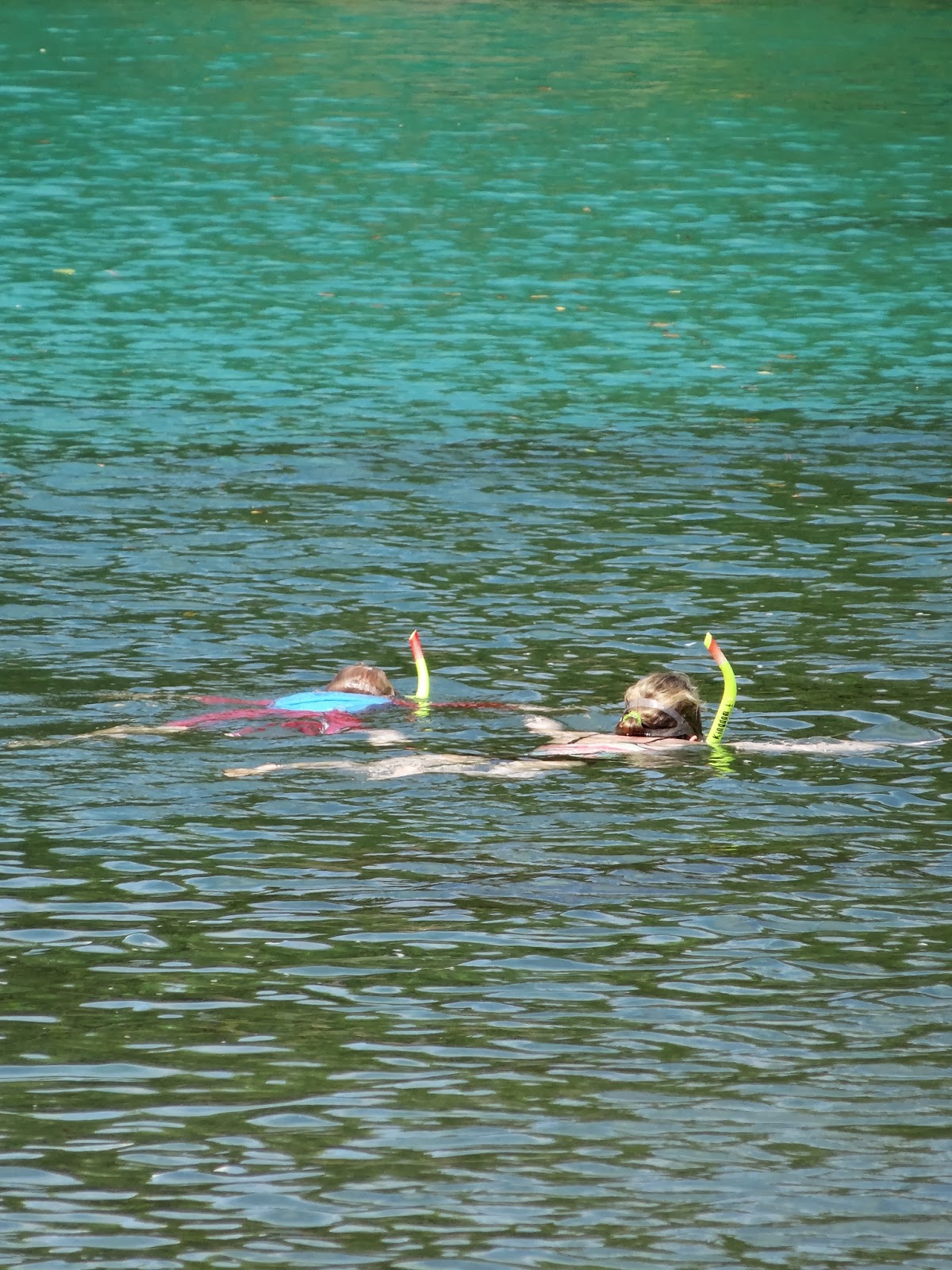Our first stop on the first day was en route to the Rock Islands, which are hundreds of small, uninhabited limestone islands at the southern tip of Palau. The limestone base of the islands has eroded over millenia, so that they sprout like mushrooms out of the water, topped with vegetation. Water also permeates the porous rock, in some cases forming inland salt water lakes.
The ocean waters are relatively calm around the islands, and we stopped for a 20-minute snorkel, drifting on the current. As an inexperienced snorkeler, it was a little scary to be out in the open ocean, but the beautiful tropical fish soon took my mind off my fears. I'd insisted my son wear a life jacket, but it wasn't really necessary. By the end of the day he was snorkeling freely; even diving, something which I never managed to do.
As soon as we arrived at the Rock Islands we got down to the morning's work of a two-hour paddle through the quiet waters. I can't think of a better way to appreciate the natural wonder of this place, which photos merely hint at.
The water looks milky here, but mostly it was crystal clear right to the bottom of the sea bed.
At lunchtime we stopped at one of the many caves that the sea and rain have formed over thousands of years. Vegetation and animals have colonised each cave. A cave we visited later had a colony of swallows nesting in it.
More snorkeling and kayaking was on the itinerary in the afternoon. We saw a bed of coral bordering one of the islands that was so diverse in color and formation it looked like a garden, and we paddled around Nikko Bay, which is a reef shark nursery. Unfortunately there were no baby sharks to be seen, possibly because a salt water crocodile was reportedly stalking the area.
The final highlight of our kayaking day was Disney Lake, which is only accessible via a tunnel when the tide is low. I wasn't brave enough to snorkel in two inches of air, but our guide kindly took my son through.
The next day we were booked on the must-do Palauan tour experience - Jellyfish Lake. This is a inland sea water lake of golden jellyfish with no stings. Introduced to the lake hundreds of thousands of years ago by birds and through the porous limestone rock, the jellyfish suffered little predation and eventually lost their stings. Now people can swim among them, and hold them - gently - without harm.
But Jellyfish Lake was only one of our stops that day. The first place we visited was Milky Way, a bay with a sea bed formed of white clay, which tourists love to spread all over their bodies. The clay is supposed to be very good for your skin. I enjoyed that first dip of the day in the warm, pale blue, slightly opaque water of the bay very much, and of course I smothered myself in mud, though I can't say I look any younger.
There isn't much point in snorkeling in the Milky Way because it's just a white sea bed, but the same cannot be said of our next stop, the Drop Off Point. Here, the sea bed goes out twenty to thirty feet from the shore, at a depth of fifteen to twenty feet, then drops off at a sea cliff edge to sixty to ninety feet, before it sinks into the abyss. Thankfully us snorkelers stayed in the shallow waters, and didn't miss out at all as far as I could tell. We saw huge numbers of reef fish, and two white tip sharks about 5 feet long. I was a little worried about seeing sharks before we got in the water, but my feelings changed entirely after seeing these beautiful animals in the wild.
Another site we visited had giant clams in shallow water, and our guide assured us that they don't really close on people's feet and cause drownings, as is commonly depicted in films. But he added it was still a good idea not to swim down and touch them, and this message of protecting the natural life and environment was repeated throughout our tours.
Jellyfish Lake sounded like an amazing experience before we even arrived in Palau, and I found it exceeded my expectations. We didn't take an underwater camera with us, but many others have recorded this natural wonder.
Cemetery Reef was our final stop of the day, named after some cement blocks laid as a test that grew to resemble tombstones as they got covered in coral. I was too tired to snorkel by this time, but my son went in and saw some large fish.
Our Jellyfish Lake tour was on our penultimate day in Palau, so there isn't much more to tell. I'll wrap up with some final details on interesting food experiences and other bits and bobs in my next post.















